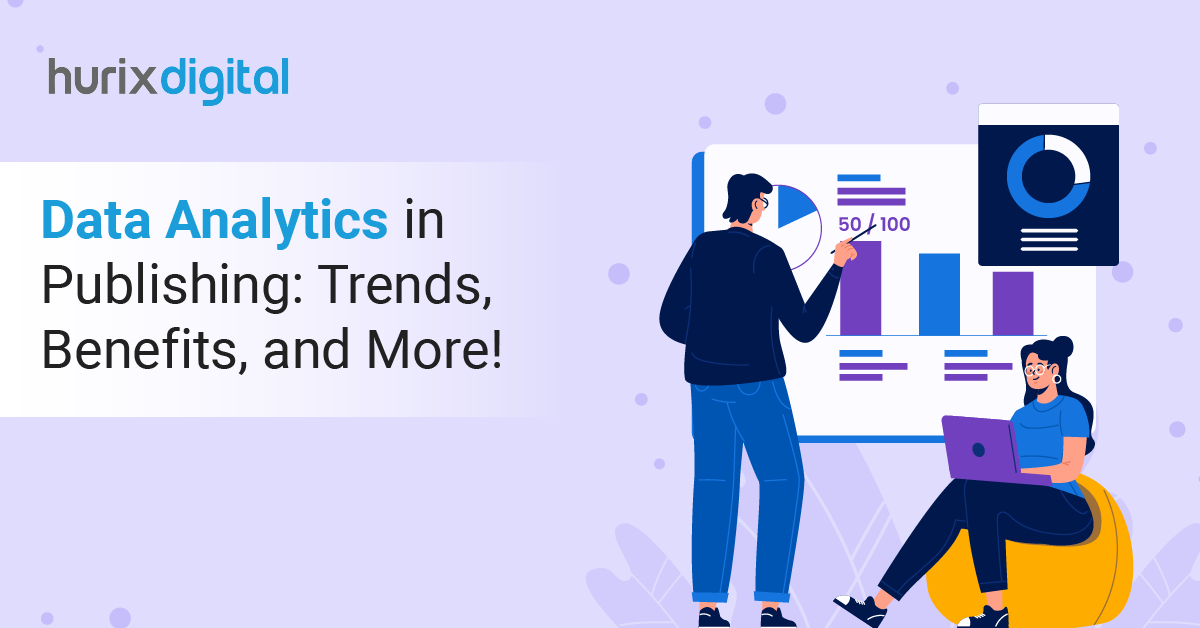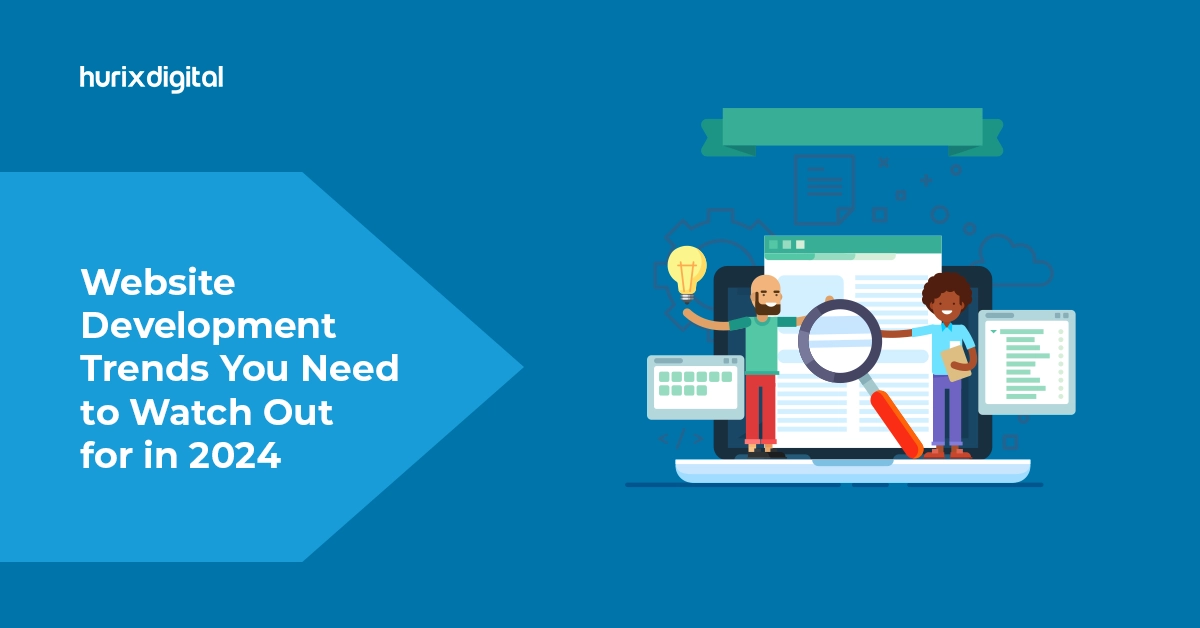
Data Analytics in Publishing: Trends, Benefits, and More!
Summarize with:
The advent of data analytics has given publishers a fresh perspective and an evidence-based approach to navigating the intricacies of the publishing workflow. A data-driven approach is becoming widely popular, from major publishing houses to small, privately owned publishers.
This shift is not just a fad; rather, it is a profound change that is fundamentally altering the publishing sector and making data an indispensable instrument for strategic analysis.
This blog outlines a detailed snapshot of data analytics in the publishing industry and walks you through the manifold benefits of data-driven editorial decisions. Let’s get started!
Table of Contents:
- Overview of Data Analytics in Publishing
- Leverage Data Analytics to Identify Gaps in Editorial Strategies
- Top Benefits of Data-Driven Editorial Decisions
- Summing Up
Overview of Data Analytics in Publishing
Analytics’ advancement in the publishing sector has taken a revolutionary turn. The shift from print to online content marked the beginning of the digital age and allowed publishers to monitor customer interactions.
The implementation of data analytics tools and artificial intelligence (AI) allowed for in-depth evaluation of user behavior, while standardization initiatives enabled comparable metrics. Not only did alt metrics and personalized content suggestions offer insightful information, but open access increased the exposure of content even more.
Decision-making based on analytics became commonplace, encouraging cooperation and openness between stakeholders. By adopting a perpetual enhancement mindset and fine-tuning their content tactics in response to user insights, publishers and editorial managers are creating an evolving and data-driven ecosystem for academic publishing.
Also Read: Driving Enterprise Growth with Data Analytics as a Service
Leverage Data Analytics to Identify Gaps in Editorial Strategies
Here are the most effective ways you can utilize data analytics for various editorial workflow optimization processes.
1. Conduct A/B Testing
Use A/B testing to test various content strategies and editorial decisions. By experimenting with different headlines, images, and article formats, you may obtain information about which elements work best with your audience. This helps editorial managers optimize content for maximum engagement.
2. Employ Data Tracking Tools
Use data analytics tools like Chartbeat, Adobe Analytics, and Google Analytics to monitor and evaluate user behavior on your publishing platform.
These resources can offer insightful information about how readers engage with your work, which can be useful in identifying areas where editorial judgments are lacking.
3. Define KPIs
To begin with, determine the most crucial metrics for gauging the effectiveness of editorial choices in publishing. Metrics like page views, time on page, bounce rate, social shares, and reader engagement may be among them.
You can efficiently carry out content performance analysis by establishing well-defined key performance indicators.
Top Benefits of Data-Driven Editorial Decisions
In the modern media landscape, where success is largely dependent on understanding audience behavior and preferences, data-driven editorial decisions have become essential.
Here, we explore the seven main advantages of data-driven editorial decisions:
1. Audience Insights and Segmentation
A thorough grasp of the audience is the first step toward making data-driven editorial decisions. Publishing houses can obtain valuable insights into the demographics, preferences, and behaviors of their readers by utilizing data analytics.
Thanks to this segmentation, editors can customize content for particular audience segments, guaranteeing that every piece will resonate effectively. For instance, data may show that a sizeable percentage of readers in a given age range are interested in niche genres or subjects.
Equipped with this understanding, editors can create focused content strategies that accommodate these tastes, increasing reader engagement.
2. Customization of Content
Personalization is essential for increasing content consumption and cultivating reader loyalty. Editors can use data analytics to tailor content recommendations to each reader based on their unique preferences and behavior patterns.
A publishing platform, for example, may suggest books or articles based on a reader’s previous purchases, browsing history, or preferred genres. This tailored approach enhances the reading experience, promotes ongoing interaction, and raises the possibility of return visits and purchases.
3. Enhances Content Relevance and QA
Sustaining relevance and quality of content requires an understanding of what appeals to readers. Data-driven insights give editors instantaneous feedback on the effectiveness of their content, taking into account metrics like social sharing, reader engagement, and time spent on articles.
Editors can perform a trend analysis for content strategy by examining these metrics, taking into account various subjects and formats that are most popular with their audience.
4. Optimizes the Distribution of Content
The optimization of content distribution strategies is contingent upon the application of data analytics. Data can be used by publishing houses to determine the best platforms, channels, and times to release content.
For instance, an analysis may show that a certain book genre excels on a given digital platform or that particular subjects garner more attention at particular times of the year.
Publishers can increase visibility and drive traffic to their publications by carefully planning the order and timing of their content.
5. Revenue Generation Opportunities
Data-driven editorial choices have the potential to boost revenue generation while improving audience engagement and content quality. Publishers who want to target particular audience segments can attract sponsors and advertisers by utilizing data insights.
For instance, information demonstrating high reader engagement among young adults can assist publishers in obtaining advertising contracts from companies that cater to this market.
Furthermore, data analytics can provide insights into premium content offerings, pricing policies, and subscription models, generating income streams in addition to traditional book sales.
6. Provides Scope for Continuous Improvement
Data-driven editorial choices encourage publishing houses to be innovative. Editors can continuously improve their content strategies and offerings by conducting experiments, examining reader feedback, and monitoring industry trends.
Publishers can adjust to shifting market conditions and maintain their competitiveness in a sector that is changing quickly thanks to this iterative process.
Additionally, data-driven insights give publishers the ability to predict reader preferences and market demands, which enables them to launch new products that appeal to their target market proactively.
7. Helps in Making Data-Informed Decisions
Data is a driving force behind editorial decision-making, providing publishers with empirical proof to support their projects.
Publishers can assess the effectiveness of various content initiatives by monitoring key performance indicators (KPIs) like
- Reader retention rates
- Sales conversions
- Advertising revenue
They can refine their tactics, allocate resources, and concentrate on projects that provide the best ROI.
Also Read: How Data Analytics Companies Revolutionizing EdTech?
Summing Up
Understanding reader behavior in the digital age involves more than just figuring out what content is popular. It entails a thorough investigation of the nuances of readers’ perceptions of the content, their consumption patterns, and their propensity for sharing. Data analytics in publishing is essential as it provides valuable information that can influence content strategies and increase user engagement.
If you are looking to make data-driven editorial decisions to upscale your editorial workflow, Hurix Digital can help. Our experts provide end-to-end editorial solutions with a wide range of style manuals.
Learn more about our impact-driven publishing strategies. Book a demo call right away!
Summarize with:

Vice President – Content Transformation at HurixDigital, based in Chennai. With nearly 20 years in digital content, he leads large-scale transformation and accessibility initiatives. A frequent presenter (e.g., London Book Fair 2025), Gokulnath drives AI-powered publishing solutions and inclusive content strategies for global clients
 A Space for Thoughtful
A Space for Thoughtful 



